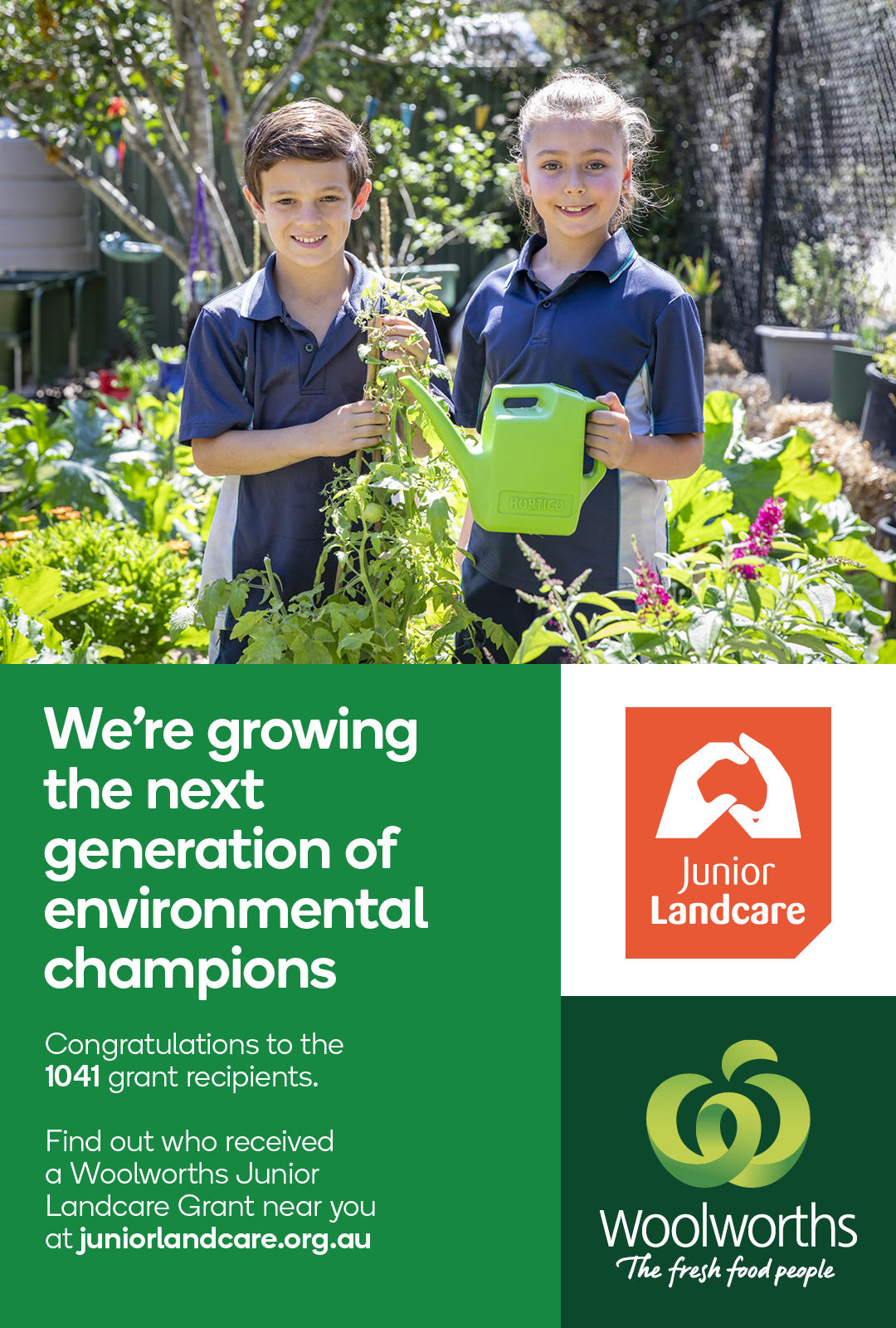News

We are excited to launch our new Junior Landcare Learning Centre early next year with a library of learning activities to help inspire Junior Landcarers to be active empowered and aware.
Here is a sneak peek at an activity that will help wildlife in times of extreme heat. Please try it out and we would love to hear how it goes.
We have the ability to help other living beings when they are in need of water and are unable to source it themselves. Due to lack of regular rainfall, low rainfall, drought or bushfires, water can become scarce for animals. Providing water is a simple yet effective way to help local fauna (animals).
Checklist
- Container for a wildlife waterer per group- shallow, with a flat base and gradual edges are best
- 2-3 Rocks (approximately the size of a closed fist)
- Sticks (size dependent on size of water container)
- 1 bucket to carry clean water to fill the wildlife waterer
Instructions
Step 1
Head outside to a shady location, bordered by high grasses, plants or shrubs in your outdoor space. Place the container here; this will help hide wildlife hide from possible predators when drinking or bathing. Make sure it’s also in a location where you can easily access the container for cleaning and refilling and also observe any wildlife activity around the water.
When setting up your container, add a rock or two and your sticks to the base before covering with clean water. If the container is large you might also like to add a medium size sticks to the container so that small animals such as skinks can climb in and out safely.
Step 2
Top up water when the level appears low or the water becomes dirty.
Intermittently observe the water container on warm or hot days. Predict and record which animals might visit your water container and at what time of day in your journal. Which is the smallest animal who could access the water? Which is the largest? Think about where you live, and what animals you have observed in the past.
If you feel the location is not optimal after observing and trialing the location of your water container move it to another location which might be more suitable for wildlife.
You might like to take photos to capture your observations. Please share it with us and send it to the Junior Landcare’s Education Program Manager, Mary Bell.
 Teachers & Educators
Teachers & Educators Youth or Community Groups
Youth or Community Groups
0 Comments